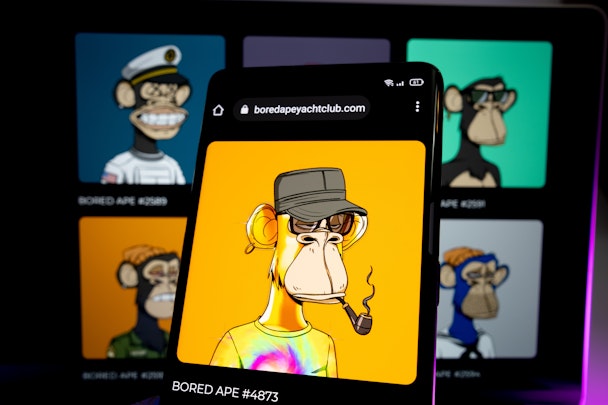Stop siloing tech trends and start looking at the bigger picture
Tech trends come and go like the seasons. In order to build a durable tech strategy, writes Unit9 managing director Rosh Singh, brands need to take a step back and view technologies not as separate tools, but as a single, composite suite of solutions.

Not so long ago, NFTs were on virtually every marketer’s radar. Where are they now? / Adobe Stock
If there’s one thing the advertising industry loves, it’s a shiny new tech trend.
In 2021, we went crazy for NFTs. Last year saw a huge amount of excitement surrounding the metaverse. With fanfare on such a massive scale, it was inevitable that some expectations would not be met. We saw brands opting for ‘fire-and-forget’ strategies - geared more toward headlines and short-term gains than towards longevity and authenticity. Now, as skepticism about the metaverse starts to set in, eyes are beginning to turn towards AI, which seems to many people to be the next big thing.
But here’s the thing: If you’re still thinking about AI and the metaverse as two separate phenomena, you’re missing the point. Brands need to take a more unified approach to technology and ready themselves for advancements in all areas. What matters is building a holistic view of tech trends that can help your entire business; PR-grabbing one-off activations and knee-jerk one-upmanship are dead ends.
Advertisement
Most people don’t care about technology. They care about the experiences that technology can deliver. That’s why it’s crucial to realize that technologies shouldn’t be siloed; they should collectively drive experiences that consumers will want to be able to access in the future.
Audiences want to participate in alternative and expanded realities, full of wonder and exploration. Brands need to think about how they can deliver these. Michelob Ultra’s McEnroe v McEnroe is one illustrative example of a brand bringing multiple technologies together to deliver a new and engaging experience to its audience.
They also want ownership. The experience of co-creation empowers individuals to feel like they are a part of something bigger than themselves - and technology is making it easier for brands to deliver such an experience. The launch of Roblox’s generative AI tool is a great example of a platform leveraging tech to cultivate a co-creative experience among users. Earlier this month, Coke also launched a generative AI campaign designed to engage with fans’ creativity.
Advertisement
Finally, they want to feel joy and a sense of connection. The NBA stands out as a brand that’s carefully fine-tuning its activities in this regard. The organization’s commitment to exploring and integrating emerging technologies (including an AI-driven livestream innovation, recently launched within the NBA app, which allows viewers to embody their favorite basketball stars on-screen) signals long-term strategic thinking. The vision is bold: the brand intends to make passive sports viewership a thing of the past. There has been some speculation about the efficacy of on-stage demos; nonetheless, the NBA is actively utilizing technology to make the basketball-viewing experience more enjoyable and engaging for fans.
Here are some steps to follow – and questions to ask yourself – when you’re setting out to develop a holistic tech strategy for your brand:
Set a clear vision. What is the role that technology plays in your business? How and why does it matter for your customers and staff? How does it contribute to your product?
Suggested newsletters for you
Create a roadmap. What are the technologies that could have a transformative impact on your brand? (This should be a constantly evolving list and should be independent of market trends and hype cycles.) Understand how each relevant technology could manifest itself within the context of your business - perhaps as a new product, or a new customer experience. Iterate over time.
Look for whitespace. Command the space you occupy. Research the market and ensure that everything you do is as unique and as authentic as possible.
Invest in internal education. Change comes from within. Ensure that all internal stakeholders are on the same journey and excited for the future. Always remember: It should be fun!
Test, learn and keep your eye on the ball. It’s okay to experiment - not everything has to ultimately go to market. Just make sure that every step of the testing process aligns with the broader objectives of your brand; if your use of technology does not add real value to your business and to your customers, then it’s a waste of time.
Today – in an era when transformative new technologies seem to crop up almost daily – brands need to adopt a holistic, undifferentiated view of the tools that are at their disposal. Future-proofing needs to happen across everything from specific activations to wider marketing strategies and product development. By connecting the dots and successfully carving out an emerging tech roadmap that covers as many bases as possible, brands will be able to chart their course into a very exciting future.
Rosh Singh is managing director at Unit9. For more on the latest happening in AI, web3 and other cutting-edge technologies, sign up for The Emerging Tech Briefing newsletter here.
